Part One
June 2019. Netflix releases When They See Us, Ava DuVerney’s superb miniseries on the Central Park Five case.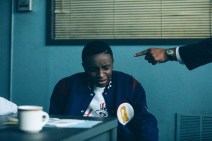
In the first two weeks of the month, the seventh African-American transgender woman is murdered this year. Another, Layleen Polanco, is found dead at Rikers Island Prison. A study reveals that twenty percent of cops post racist comments on Facebook. A Vallejo, California investigation concludes that cops who shot a black man 55 times in 3.5 seconds “acted reasonably.” A new book describes long-term torture policies of the Chicago police. At several high school graduations across the country, principals and superintendents shut off the microphones of black valedictorians who try to speak about racial issues.
A sixth immigrant child dies in U.S. custody, and the Trump Administration decides to hold such victims in a former World War II concentration camp for Japanese-Americans. Yes, let’s stop using the phrase “detention camp” to describe the current insanity and, like the Los Angeles Times, use the more appropriate term “concentration camp.” It’s more accurate in terms of the cruel and unusual conditions, and it reminds us of how the prison-industrial complex has contributed to the concentration of wealth in America.
The U.S., with 5% of the world’s population, holds 25% of all inmates, over 2 ½ million, of which 56% are black or brown. It has the largest incarceration rate in the world: 762 per 100,000 residents (as opposed to 152 in the U.K. and 102 in Canada). Fifty percent are incarcerated for mostly non-violent drug convictions. State prisons hold African Americans at more than five times the rate of whites, and at least ten times the white rate in five states. Large numbers of them, like Layleen Polanco, are dying there.
Conditions in private, for-profit prisons are worse. Most states have signed agreements with them guaranteeing to fill a certain number of beds in jail at any given point. The most common rate is 90%, though some prisons have extracted 100% promises. Because of these contracts, states are often obligated to keep prisons almost full at all times or pay for the beds anyway, so the incentive is to incarcerate more people and for longer in order to fill the quotas. The profits of the largest such company, Corrections Corporation of America, have increased by more than 500% in the past 20 years. The three largest such corporations have spent more than $45 million on campaign donations and lobbyists.
Yes, there has been some good news. Bill De Blasio became mayor of New York City partially by promising to end its notorious “Stop-and-Frisk” program. The NYPD now reports about 10,000 stops per year, down from 700,000 (2,000 per day) in 2011, and crime in New York City has dropped significantly. 2018 recorded the lowest number of homicides in nearly 70 years. Still, young black and Latino males (five percent of the city’s population) make up 38% of reported stops, even though 93% result in no weapon being found. But let’s not quibble about good news.
The reforms, however, came too late for the millions (literally) of black and brown youth caught up over twenty years in the city’s brutal, wasteful, unconstitutional and quite useless program. It certainly came too late for the Central Park Five (who now call themselves the Exonerated Five).
…one of the reasons people cling to their hates so stubbornly is because they sense, once hate is gone, they will be forced to deal with pain. – James Baldwin
Thirty years ago, the NYPD forced (some say tortured) these boys aged 14 to16 into confessing to the rape of a white, female jogger. None had legal representation. The city had a weak case against them, but the political climate dictated their fate as scapegoats 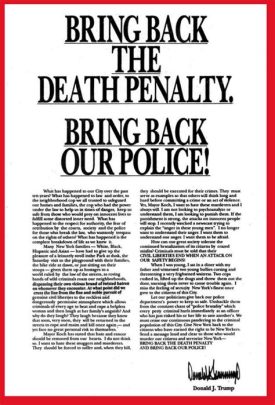 for a blood-thirsty public egged on by Donald Trump, who had taken out full-page ads in several newspapers calling for their execution even before they were convicted.
for a blood-thirsty public egged on by Donald Trump, who had taken out full-page ads in several newspapers calling for their execution even before they were convicted.
They served between 7 and 13 years in prison under hideous conditions before the actual rapist confessed. They entered prison as children and left it as traumatized adults. Rochaun Meadows Fernandez writes:
There is immense power in DuVernay’s ability to tell a story that takes place during the period of boyhood…An obvious reason to tell the story that way is that they were young boys who were robbed of many of youth’s experiences by an anti-black and inherently corrupt criminal justice system. The other reason is to challenge the criminal justice dialogue. Black men are former black boys, and all too often they have that period of innocence stolen.
For me, that’s where much of the power of DuVernay’s depiction comes from. Each episode forces us to stop thinking of the abuses of the system as a black man’s problem, since doing so both desensitizes us and enables us to make excuses and place responsibility on the actions of an adult victim…Instead, we see a story told through the tear-filled eyes of five young black boys who were abused, coerced, and manipulated in a way that is unacceptable. They were children.
What exactly has changed in New York City? Lauren Cook writes:
While police are not allowed to use physical force during an interrogation, it is legal to deceive a person about the investigation. And if the tactic leads to a confession, it could be used as evidence in court…The use of deception during interrogations was a key factor in the Central Park Five… Since 1989, 365 people in the country have been exonerated through DNA evidence, according to the Innocence Project. Of those cases, 70 % involved eyewitness misidentification and 42 percent of those cases included errors of cross-racial misidentification. Twenty-eight percent of the cases included false confessions, 33 percent of which were made by a person 18 years old or younger.
These children were used to propel certain powerful white people into positions of greater power, writes Margaret Kimberley:
Trump was part of a very large and influential lynch mob. The tabloid media invented the phrase “wilding” and attached it to every black teenager in the country…the City of New York did not compensate the men until 2014, twelve years after they were exonerated…for the simple reason that mayor Michael Bloomberg…directed the city to delay and appeal and it was left to his successor to bring some measure of justice with a $41 million settlement. Bloomberg is as much a villain as Trump…Another unsung perpetrator is Manhattan district attorney Robert Morgenthau (who was) lead prosecutor Linda Fairstein’s boss (and who) could have stopped the process at any time.
If Beale Street Could Talk, last year’s excellent film version of the James Baldwin novel, tells a similar story.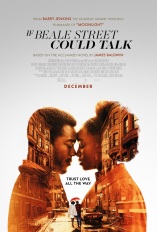
In Chapters Six and Ten of my book Madness at the Gates of the City: The Myth of American Innocence, I place our historical contempt for our own children into a broader, mythological context. Going all the way back to the story of Abraham and Isaac, the myth of the Sacrifice of the Children is the basic narrative underlying all of Western – and especially American – history and culture.
…this is the crime of which I accuse my country and my countrymen and for which neither I nor time nor history will ever forgive them, that they have destroyed and are destroying hundreds of thousands of lives and do not know it and do not want to know it…but it is not permissible that the authors of devastation should also be innocent. It is the innocence which constitutes the crime. – James Baldwin
I suggest that, at some level, we are all aware of this historical trauma, because none of us have escaped its consequences. I submit further that almost all of our addictive, neurotic, distracting, self-serving, self-sabotaging and profoundly unsatisfying lifestyles, behavior patterns, religious views and political choices are nothing more than increasingly desperate attempts to remain innocent of what we all know. Don’t you know?
Part Two
In times like this I think of Sam Cooke’s great 1960 recording of “Chain Gang.” I am always overwhelmed with deep feelings.  Then I notice a whole train of associations. First, the singer himself: possibly the sweetest, most soulful voice of the twentieth century, a great talent who was snuffed out at age 34.
Then I notice a whole train of associations. First, the singer himself: possibly the sweetest, most soulful voice of the twentieth century, a great talent who was snuffed out at age 34.
I hear somethin’ sayin’
(hooh! aah!) (hooh! aah!)
(hooh! aah!) (hooh! aah!)(well, don’t you know)
that’s the sound of the men working on the chain gang
that’s the sound of the men working on the chain gang
All day long they’re singin’
(hooh! aah!) (hooh! aah!)
(hooh! aah!) (hooh! aah!)
(well, don’t you know)
that’s the sound of the men working on the chain gang
that’s the sound of the men working on the chain gang
All day long they work so hard
till the sun is goin’ down
working on the highways and byways
and wearing, wearing a frown
you hear them moanin’ their lives away
then you hear somebody say
That’s the sound of the men working on the chain gang
that’s the sound of the men working on the chain gang
Can’t ya hear them singin’
mm, I’m goin’ home one of these days, I’m goin’ home,see my woman whom I love so dear
but meanwhile I got to work right here
(well, don’t you know)
that’s the sound of the men working on the chain gang
that’s the sound of the men working on the chain gang
All day long they’re singin’, mm
my, my, my, my, my, my, my, my, my work is so hard
give me water, I’m thirsty
my work is so hard
Then I think of the terrible image of the chain gang itself, that astonishingly brutal system used throughout the South to punish rebellious Black men from the 1870s to the 1950s as part of the “Jim Crow” system of racial oppression. 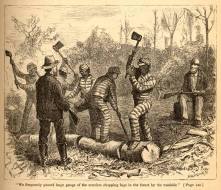 It perpetuated African-American servitude once the Thirteenth Amendment to the Constitution ended slavery outside of the context of punishment for a crime.
It perpetuated African-American servitude once the Thirteenth Amendment to the Constitution ended slavery outside of the context of punishment for a crime.
A chain gang was a group – sometimes a very long chain – of prisoners chained together at the ankles to perform “hard labor” such as repairing buildings, building roads, clearing land or even intrinsically pointless tasks (think “cruel and unusual punishment”) such as breaking up rocks to form gravel.
Falls could imperil several individuals at once. The effort required to avoid tripping while in leg irons was known as the convict shuffle. Convicts? Local police arrested very large numbers of these men for minor offenses, including “vagrancy,” and then contracted out their labor to private interests. 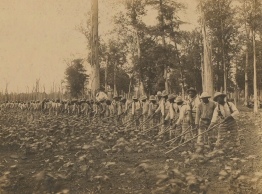 Some of the chains used in the Georgia system weighed 20 pounds. Prisoners suffered from ulcers and gangrene where the metal ground against their skin. Protests resulted in the end of system by the mid-1950s.
Some of the chains used in the Georgia system weighed 20 pounds. Prisoners suffered from ulcers and gangrene where the metal ground against their skin. Protests resulted in the end of system by the mid-1950s.
But then I remember – don’t you know? – that during the1990s a few states reintroduced it. 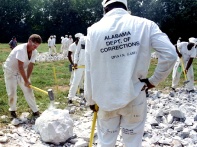 Although lawsuits soon forced most of them to backtrack, the notorious Sheriff Joe Arpaio retained it in Arizona. Indeed, as recently as 2013, Arizona still had female chain gangs.
Although lawsuits soon forced most of them to backtrack, the notorious Sheriff Joe Arpaio retained it in Arizona. Indeed, as recently as 2013, Arizona still had female chain gangs.  The women were chained together at the ankles and carried out tasks such as weeding at the sides of highways and burying unclaimed bodies at a cemetery.
The women were chained together at the ankles and carried out tasks such as weeding at the sides of highways and burying unclaimed bodies at a cemetery.
All this was happening before Donald Trump shamelessly instituted the cruel practices of separating Latino children from their parents and crowding them into cages. As I write in Chapter Ten of my book, this is how America continues to cling to its innocence: by scapegoating the Other, as minorities, as children, and most savagely, as the children of minorities.
You cannot lynch me and keep me in ghettos without becoming something monstrous yourselves. And, furthermore, you give me a terrifying advantage. You never had to look at me. I had to look at you. I know more about you than you know about me. Not everything that is faced can be changed, but nothing can be changed until it is faced. – James Baldwin
Our society continues to brutalize people of color through a police system that lacks all accountability. In the six months after Trayvon Martin was killed, police murdered over eighty African Americans. Kali Akuno of the Malcolm X Grassroots Movement writes:
As we dug deeper, and more grieving family members came forward, we found that every 36 hours…another Black child, man or woman dies at the hands of the police, security guards or self-appointed vigilantes.
Eighty percent of the victims are unarmed. In 2012, police in the U.S. killed over a thousand people. They were responsible for 10% of firearm-related homicides, and they injured (to the point of hospitalization) nearly 55,000 others. Very few were punished. As I write here (Do Black Lives Really Matter?):
So here, sadly, is the ultimate answer to the question of Black lives mattering: of course they matter, in the value they offer to this upsurge of hatred. Every time a cop kills an unarmed Black person – especially when the crime is recorded – and goes unpunished, the message goes out to the haters (those who hate themselves so profoundly that they must transfer that hate onto the Other) that they, the haters, can go out and do something similar without fear of reprisal or punishment. Representatives of the National Security State, from local courtrooms to the White House, will protect them.
But the prison-industrial complex has determined that black lives are more valuable live than dead. As always, we follow the money. Cui Bono?
Sam Cooke wanted us to pay attention, and having done that, to drop some of our innocence. Listen again to the song. Just before he sings the refrain, “That’s the sound of the men working on the chain gang…”, the bass man of his backup group sings, “Well don’t you know…” Musically, this is a statement that links the refrain to the stanzas, but it is much more than that. It is in fact a challenge to the listener: Are you asleep? Don’t you know what has been going on? Your soul, your moral well-being, your nation, your children all depend on this, on rising out of your ignorance, on becoming “woke.” You can no longer, says the bass man, pretend to be unaware of what the agents of authority claim to be doing in your name in order to maintain your own sense of innocence.
These innocent people are trapped in a history they do not understand, and until they understand it, they cannot be released from it. – James Baldwin
I realize this essay is beginning to sound preachy (perhaps to honor Sam’s and James’ origins in the church), but I can’t help but think that there’s going to be a reckoning. Is there such a thing as national karma? Will our descendants suffer for our sins?
Then it occurs to me: aren’t we already living in the reckoning time? Aren’t almost all of us experiencing a diminished, de-mythologized, de-potentiated life, swinging between the unsatisfying harbors of addictions, fundamentalism, media-driven consumerism, violent patriotism and – most of all – fear of the Other (as Muslim terrorists, immigrants or black men)?
I have always been struck, in America, by an emotional poverty so bottomless and a terror of human life, of human touch, so deep, that virtually no American appears to be able to achieve any visible, organic connection between his public stance and his private life…This failure of the private life has always had the most devastating effect on American public conduct, and on black-white relations. If Americans were not so terrified of their private selves, they never would have become so dependent on what they call ‘the Negro problem’. This problem, which they invented in order to safeguard their purity, has made of them criminals and monsters, and it is destroying them; and this not from anything blacks may or may not be doing but because of the role a guilty and constricted white imagination has assigned to the blacks. – James Baldwin
Then again, I don’t know if Sam could allow himself to fall into despair. His very last recording was A Change Is Gonna Come. It was released at a very significant moment, in December 1963, four months after Martin Luther King’s “I Have A Dream” speech, just after the Kennedy assassination, and two months before the arrival of the Beatles. A year later he was dead.
Earlier, in January of that year, Sam had recorded a live album – “One Night Stand! Live at the Harlem Square Club, 1963” – on which he sang “Chain Gang” with an upbeat, danceable, celebratory rhythm to a wildly appreciatory, sing along crowd that was almost certainly exclusively black. What was going on in that room? How could they seem to be enjoying such a sad song?
This event was a ritual, and the high priest was leading the assembly in the multi-generational confession of extreme pain and grief that, once expressed – and received, in community – turns into its opposite, where the “Ooh! Aah!” has a very different meaning. This is the secret of the Blues, something all indigenous people know, that – in community – one can reach profound, even ecstatic levels of unity once all aspects of the truth, especially the dark aspects, have been brought into the light.
This was Sam’s gift to us, and his challenge. Imagine such a world. Indeed, we really have no choice but to imagine such a world. And now we really do know…
Here are some other essays of mine on the subject of race in America;
Hands up, Don’t Shoot: The Sacrifice of American Dionysus